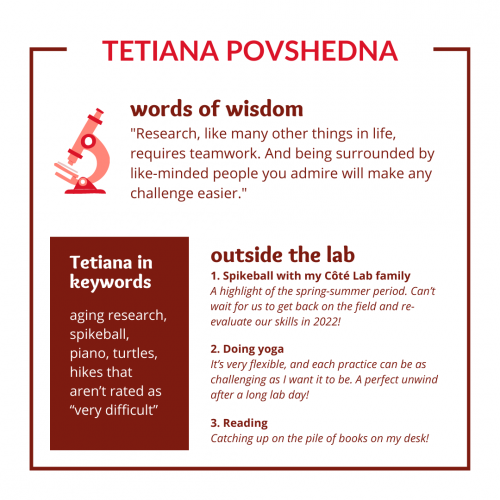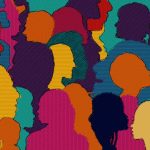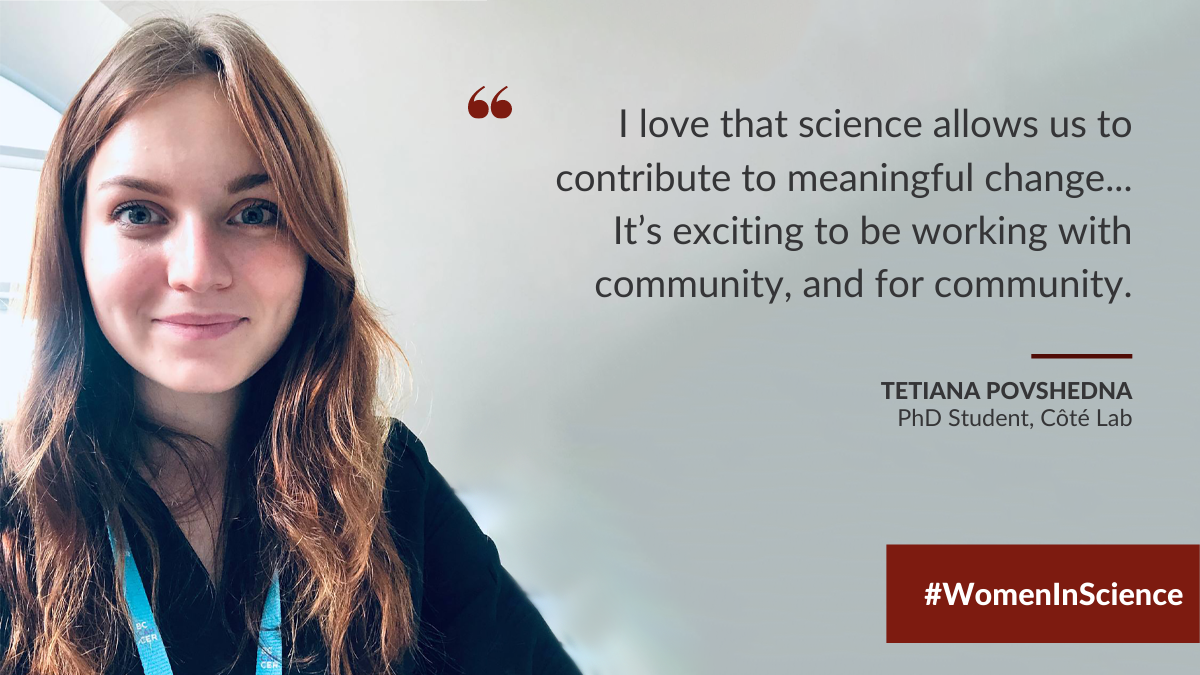
Tetiana’s research in the Côté Lab takes a holistic, community-based approach to understand aging in women living with HIV.
For the International Day of Women and Girls in Science, we had the pleasure of speaking with women scientists at different points in their career journey, including Tetiana Povshedna, a PhD Student in the Côté Lab.
Tell us about your research.
I am lucky to work with an amazing, women-led research team on a cohort study, which is currently recruiting participants in BC! Our study, named BCC3, aims to better understand aging in women living with HIV, especially factors that contribute to healthy aging.
-
Learn more about the BCC3 study at: https://hivhearme.ca/
We are taking a community-based, holistic approach: exploring both biological variables and social determinants of health. We consider biological factors like cellular aging, inflammation, and the burden of comorbidities. From the social side, we are using a community survey to gather information on education, economic security, experiences of violence and discrimination, and more – which can all contribute to observed cellular changes and the aging process.
We hope to identify factors that promote healthy aging in those experiencing accelerated or accentuated aging, and to share this knowledge with healthcare professionals, research groups, communities and various knowledge users.
I always wanted to work on a project that would combine clinical and basic science perspectives, so I’m thankful that I got a chance to work on this cohort study with my supervisor, Dr. Hélène Côté, and all my team members.
Why look at social determinants of health?
Often, social determinants of health are driving the biological changes that we observe in different populations. We already know that women living with HIV experience a higher burden of age-related diseases at a younger age, compared to HIV-negative women. But it is not clear to what extent the virus itself is driving the observed effects, compared to social factors.
That is why we are looking at important social determinants of health, such as economic factors, housing security, and others. In doing so, we hope to untangle the complex interplay of biological and social determinants of health, and to identify factors that require more attention.
You mentioned your study takes a community-based approach. What does this mean, and why is it important in science?
Ultimately, research should be done with the community, and for the community. In our work, women living with HIV are active participants and advisors.
For example, our community survey is administered by Peer Research Associates, women living with HIV who have been trained in research and are part of the study team. We also hold annual Community Advisory Board meetings, where we present our research to community members, activists, physicians, and other organizations in the field. This provides a space for two-way dialogue, where the community can give us feedback and have a say in what they think is important, and we can integrate that into our work.
One instance of this occurred when a community member mentioned that our study didn’t consider chronic pain. Although chronic pain is more prevalent among women living with HIV and is a clinical care challenge, there isn’t much existing knowledge about chronic pain characteristics, coping strategies, and treatments for this population.
Even though our study had already been conceived and piloted at that point, we added survey questions about chronic pain, to address this point that the community identified as important. That’s a very valuable example of how community input improves science, and we look forward to gathering results on this understudied area.
“Even though our study had already been conceived and piloted at that point, we added survey questions about chronic pain, to address this point that the community identified as important. That’s a very valuable example of how community input improves science…”
What’s been your biggest challenge as a scientist?
Learning that good science requires time and patience. We live in a time when it’s easy and expected to get instant rewards or feedback. This progress, accelerated by technology, hasn’t changed the fundamental principles of science – hypotheses take time to get tested, and aren’t always supported by results.
Getting into that mindset was a challenge, but I’m happy I’ve never been alone since I started my program. My colleagues at the Côté Lab played a big part in helping me get there.
What advice would you give to young girls interested in science?
I love that women are getting more and more representation in STEM-related pop culture, social media, and news. While it’s still not enough, I think it will help young girls find role models, and convince them that their genuine interest is enough to pursue any science-related field. Being curious, brave, and reaching out with questions is a good starting point.
What is your favourite thing about science?
That it encourages us to be curious. But even more than that, I love that science allows us to contribute to meaningful change. In my case, we’re hoping to get a better understanding of healthy aging in women living with HIV. It’s exciting to be working with community, and for community.
What else would you like people to know about you or your lab?
I’d like to mention the importance of a team. Research, like many other things in life, requires teamwork. And being surrounded by like-minded people you admire will make any challenge easier.
I do believe that the Côté Lab is a very special group (shoutout here to my supervisor Dr. Hélène Côté for getting us all together), and that the success of any individual – especially in research setting – is a product of group effort. Being a part of this group has made me not only a better researcher, but also a better person, and I am thankful for that.
Thanks to Tetiana for sharing her story with us! February 11 is recognized by the United Nations as the International Day of Women and Girls in Science, which highlights the contributions of women in STEM and aims for full and equal access to participation in science, technology, and innovation for women and girls.
Read more stories from CBR women scientists, and learn about some of the challenges that women in STEM experience:
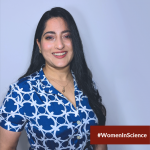
“#WomenInScience: Dr. Chaahat SB Singh” |
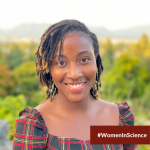
“#WomenInScience: Sia Cecilia Jan-Abu” |
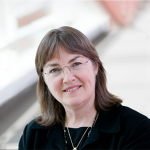
The CBR celebrates #WomenInScience Day 2021 |
“A Plug for the Leaky Pipeline” by Bronwyn Lyons |



